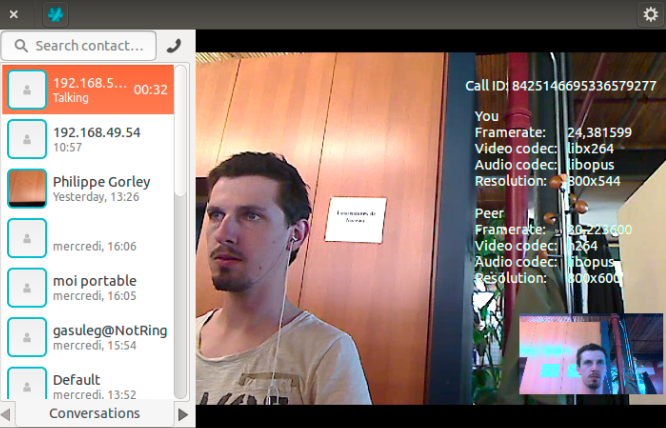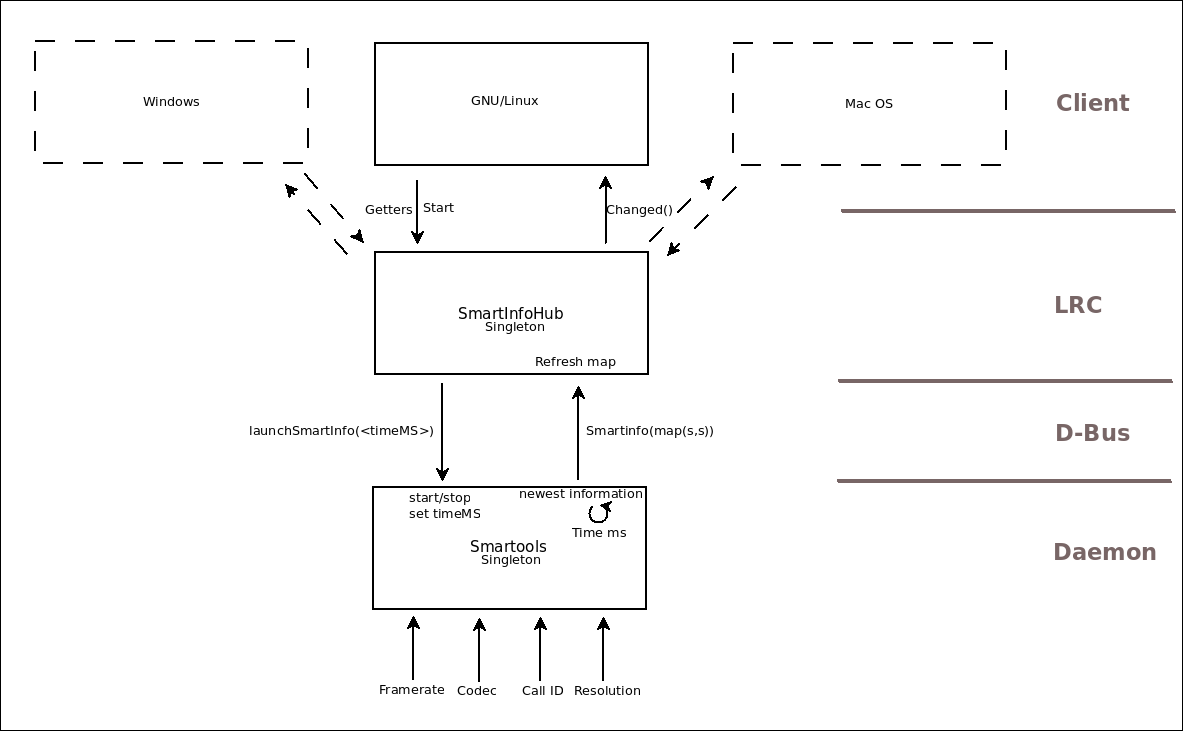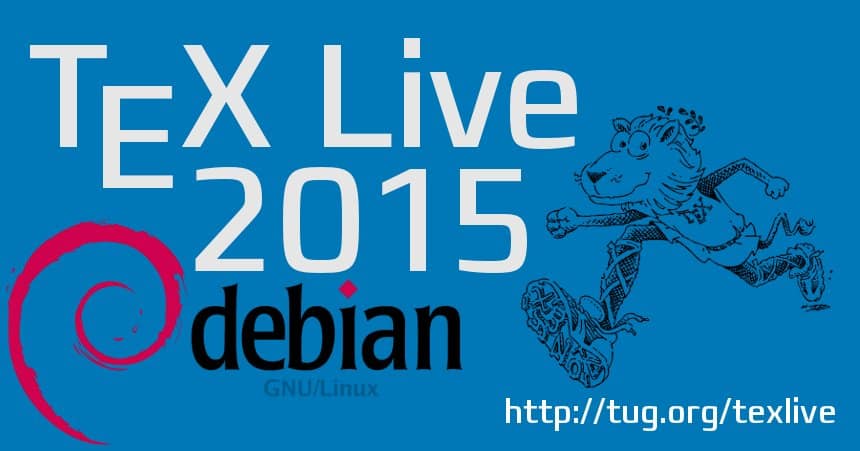Nationalpark Bike Marathon 2016 report: gravity rules!
"Marathon" is a bit of a misnomer, since I did the short route, not
the medium nor the long one. But hey, it's the official name!
Setup
This race has four possible lengths: "Valader" which is full
round-trip Scuol-Scuol (137km/4'026m), "Jauer" (Fuldera-Scuol,
103km/2'934m), "Livignasco" (Livigno-Scuol, 66km/1'871m) and "Put r"
(S-chanf to Scuol, 47Km/1'051m).
After many debates, I settled on the Livignasco route, as that was
what I was reasonably confident to be able to do. The only problem was
that this route (and all the longer ones, of course) were going over
Pass Chaschauna, which is a quite hard climb. My bike shop person, who
did the full length a number of times, just said when hearing the
route I was planning: "Chaschauna is a bitch " Bad language, proper
characterisation.
The route choice also impacts the logistics: except for the full
route, the question is where to sleep the night before? One can sleep
either at the start place, or sleep in Scuol itself and take the
official shuttle to the start place, but this means waking up much
earlier. I decided to sleep in Livigno, as with a 7:45 start this
would allow me to sleep until ~6:30, have a quick breakfast and be in
time for the race. Problem #1
So on Friday (26th) I drove to Scuol, picked up my start number, and
then drove over to Livigno and checked in to the hotel. Speaking of
picking up the start number, I saw this at the start area:

An STI needed as pacer? How fast are these people, I wondered?
Day of the race
My plan to have a relaxing sleep until relatively late failed. I went
to sleep with difficulties: late dinner due to my late arrival in
Livigno, and then I was stressed enough about not missing the race
that at 05:05 I already woke up, and was checking the clock every five
minutes. Finally at 05:30 I gave up and got out of bed, with only
about 6 hours of sleep. Problem #2.
The other problem was that I na vely thought the hotel will have
breakfast from 07:00 or even 07:30. Hah, as if this was
Switzerland. The hotel had breakfast from 08:00, no reason to hurry,
right? So I had a poor man's breakfast in the room, some energy bars
and an ice tea. Problem #3. At least I had time to grab this picture
from the hotel room:

Not bad. On to the race!
But before that, remember to fill my hydration pack with 3L of water,
and put it in my not-so-light backpack. Of course I had tools and some
spare parts with me, what if something happens? Problem #4,
over-planning.
The race
The setup at the start was pretty easy. Wait near the start until
07:45, then go. For me, not too in front, of course:

Pass Chaschauna
About 3 kilometres of easy/flat road, and then it starts. Pass
Chaschauna, killing your legs softly

But at least the pictures were nice!





The climb is difficult. It was around 22% for most of the time, and
very few people were able to bike up. Not only the absolute meters
were the problem, but also the fact that the ground was quite loose,
and pushing the bike, or rather climbing up while pushing the bike,
was difficult to do in bike shoes with cleats. Proper hiking shoes
would have been much more adequate. Maybe this is why despite the
effort, some people biked as much as possible? I was careful not to
over-exert myself and walked almost all the way up. Hence the
pictures
But at last, reached the top of the pass, and was very happy to be
done with it. The GPX file from my Garmin says it took only 4 minutes
(1.2km) after the race start to actually start climbing (it was not
obvious we were climbing so early), and then 1h:20m/8Km to get from
1'817m altitude to the highest point at 2'658m. 8Km in 1h:20m, faster
than walking pace but quite slower than running pace (on flat terrain,
of course).
At the top of the pass I was quite happy:


And then the descent started:


All the way leading to the race I kept thinking only about climbing
Chaschauna, and not about going down on it. It was quite an
experience, which I won't forget soon.
The trail was already well travelled, which means that besides the
loose ground in form of large clumps of dried earth, there was a layer
of fine, somewhat moist earth, about 3-5 centimetres deep, which made
the downhill "interesting". Coupled with what was a much steeper trail
than going up I saw most of the time ~33% it's no surprise that many,
or even most, of the people were walking their bikes down. The GPX
track says that the trail goes 319m down in 1Km (so a 31.9% over one
entire kilometre), then another 130m over the next 1.4Km (9.28%), and
then (not sure if this is the pass per se or after) another longer
segment of ~260m over 3Km (8.56%). The first steep segment needs lots
of skill and concentration, the others are normal gradients.
But at least things go fast. What took uphill took ~40 minutes for the
last 450m up, downhill it took only 15 minutes!
Falling
I was able, thanks to recent training, to bike down the trail, or at
least I thought so. So on the steep segment I was struggling to bike
down and keep control of my bike, putting one leg down on some
sections but in general being "on the bike", being hit by the dirt I
was throwing in the air despite the mud-guards, being careful but at
the same time enjoying this difficult section.
That is, right up to the point where I got, I think, too
comfortable. After the second-to-last curve, the rear wheel slides, I
lose balance and fall in the (thankfully soft) dirt a bit more
forcefully than I should have, the bike also sliding along in the
dirt. No damage to myself, just some trivial scratches; the bike seems
a bit shaken (fork was turned 180 , full of dirt, etc.). I get again
on the bike and I continue down; however, something seems off: the
rear brake level doesn't have a return anymore, I have to push it to
go back. Still usable, but strange.
So I continue the other two segment of this descent, and over these
~4-5Km I feel the brake issue going worse and worse: it's actually
hard to push the brake lever back, and even pressing it doesn't seem
to have much effect. And then the realisation dawns on my: I have
hydraulic brakes, and the worsening thing leads me to think my brake
hose has been punctured (by what? I fell in loose dirt) and I'm losing
the brake fluid with every press.
Now, on flat road, biking with only the front brake is tricky but
doable. On an MTB course, having only one brake is not a smart
thing . Not easy, not smart, and definitely dangerous. It also felt
very strange to not have both brakes, and then I realised how much I
work with the brakes in unison.
I knew that there are repair posts in the race, but I didn't know if
they can fix such things (and doing a brake fluid refill how
complicated is it, how much time does it take?). Anyway, I resolved to
try and continue if the terrain allows until I reach the first repair
post, and stop if it gets too steep. It would be pretty sad to have to
abort the race after only 10Km, right?
The terrain did cooperate: up and down, so I was able to bleed speed
easily, and even though through forest, the visibility was good enough
that I could plan ahead. It was strangely lonely at this time: I was
going slowly and thus not reaching from behind anyone, but also not
being reached by riders from behind. I did enjoy it a bit, the
quietness of the forest, just interrupted by the squeaking of my front
brake
And then I finally see the sign for "Repair: 1Km". Yaaay! maybe I
don't have to quit the race. And then, about 100m further on, another
sign: "Danger! Steep descent". Uh-oh tantalisingly close Let's go
slow. And yes, here I was overtaken by 3-4 other cyclists. This was
the single moment in the race where I did have a moment of real fear:
at one point, I was going down with the remaining brake as pressed as
I could without compromising stability, and I was still gaining
speed. Not smart, and as I was debating how to fall to stop my
descent, the terrain started to get less steep, and I finally reached
the repair station, at kilometre 21.
Difficult repairs
There was another person being serviced for a flat rear tire, so I
wait in line and discuss with him my problem. Upon hearing I only had
the front brake, he said: "Wow, how did you manage to descend this
last segment?" "Well, slowly ".
My turn came up, I explain my problem and my theory, and the repair
guy gives me one look, the bike one look, but doesn't look at the
brake hose. Instead, he looks once at the brake lever, sees that
another cable guide on my handle bar was bent during the fall and
actually was mechanically interfering with the brake lever, unbends
that thing, and says "here you go". I was stunned. 15 seconds of
looking at the problem without stress, and the problem was solved. I
could have done this myself if I took the time to look and think, and
not hurry. And I could have enjoyed all the downhill on the pass, with
two functioning brakes.
Some lessons have to be learned the hard way, and this was one. I got
off easy though, as I didn't have a real accident while biking with
only one brake. And they say you get wiser as you get older
Anyway, brake repaired, I stopped at the Sanit r tent to have my
scratches disinfected, and onwards. The following few kilometres until
S-chanf I enjoyed very much.
S-chanf
And then, 2 hours 10 minutes into the race, I exit the forest trail,
reach S-chanf, and start climbing and descending and climbing and
descending. In the sun, which now (after 10 AM) is not that light
anymore. The initial climb at S-chanf, while not much, took away my
remaining short-term reserves.
The route is 50m ascent, then down and then another 50m ascent, and
after a bit of flat another 75m ascent I was getting tired, despite
eating energy bars and drinking water (and juice at stops). This goes
one for an entire hour, during which I cover about 23Km, so not a bad
speed everything considered. But getting more and more tired.
There were also some very nice segments, along the river, in the shade
of the forest. Some fast downhill, some fast flat.
I got overtaken by quite a few real racers, that were going so fast I
couldn't keep up with them as in I didn't dare ride that fast even
when I had the energy. Clearly they were from the longer segments, and
boy were they fast! A number of couples (or pairs?) one woman one man,
a number of bigger groups, all going as if they had E-bikes or
super-powers, not just biking along tired like me
Last climb
And then, the last big climb: half an hour of going about 300m up
(absolute values, so cumulative number would probably be higher), in
the sun, over about 6Km, so only 5% average gradient. But I was tired
and even resorted to walking on some portions At least I could take
some pictures again:

Or have pictures taken:

Nice views:

At one point, in a bit of a shade, I stop to catch my breath. Somebody
else stopped as well and, seeing as I was checking my GPS, asks:
- "How much do we have left, about 10K?"
- I say yes (or was it 15K? the numbers don't match well)
- "And how about altitude?"
- "About 350m left "
- "Sigh "
I got overtaken by
a lot of cyclists here, although many of them
were from S-chanf route (based on the number colour). Sad
The thing is, besides the climbing and the sun, this and the previous
part was a very nice route: through small towns, high above the
valley, beautiful landscapes, etc. Just enjoying it was hard, since I
wasn't a) trained well enough and b) prepared well enough.
Last segment, last downhill
In any case, after that hard half hour, it's flat (or rather said,
average gradient zero):

Good road, good views, but I'm on the last virtual bar of my battery,
so the remaining 15Km I do in 40 minutes, also "eating" the last
ascent meters still about 300 left, I think, but up/down/up/down, so
you could reuse kinetic energy to gain potential one.
The only question I had now was, the route was at this moment about
400m higher (in absolute altitude) than the finish point, so when do
we lose that altitude? The answer was a very very nice answer: in the
last 5Km, for an average gradient of 8%, just perfect. I was tired
however, so I couldn't really enjoy or go fast here, but it was a good
feeling.
Finish!
And then, entering Scuol, not really believing I'm near the finish,
that I will be able to actually stop and relax. My finish picture
doesn't do justice to how happy I was at that moment:

However, after passing the finish line, it was a bit weird. I just
stop now? What next? So weird to just walk, not push pedals, and not
go up. Or down.
The funny thing here was that I thought I didn't use much of my water
(hydration pack) during the race. But soon after finishing, I drank
the equivalent of about two glasses (let's say 0.5L) and it was
over. So I did manage to drink 2.5L during the race, plus the sport
drinks at the stops.
Time for stats: my Garmin says 67.07Km, 4h:29m, average speed 15.0kph
(hah), 1'615m elevation gain. Official numbers say 66Km, 1'871m
elevation, and thus 14.22kph. Ranking-wise:
- 147/192 in the overall men Livignasco route
- 44/60 in my age category
Sigh, could have done better. I was aiming for somewhere around last
33%, not last 25%

First classed was ~66% faster than me
Going to the train station was hard as in difficult to move my
legs. Took one nice picture of Scuol though, so was able to think a
bit:

And then the long way back to Livigno. Took me 4 h to bike to Scuol,
and about 3 hours to go back via public transport. At least I ate a
sandwich in the meantime. Then reached Livigno, which was also looking
nice:

Then got on my bike, which at this point was magically light and easy
to ride (it seems I was at least partially recovered), rode to the
hotel, packed my stuff, and drove home. On the highway I had my first
real meal for that day, but I was quite tired so didn't feel like the
achievement it should have been
Lessons
The biggest takeaway from this race was the huge learning experience I
got. The race was itself awesome, but the learning even more so.
First, for this particular race, it's much better to sleep in Scuol
and (if not doing the whole route) take the shuttle to the actual
start. Yes, one has to wake up earlier, but you have assured breakfast
via the organisers (++++!), and after the race you don't have to get
even more tired by taking the train and the bus and
Second, I need better logistics: I don't need to carry that heavy load
(spare tube, pump, tools, jacket in case it's cold) when the race is
well organised. The water in the hydration pack was useful, but
carrying it up Chaschauna was a pain. Not sure what I'll do next; it's
possible to survive only on water/drinks from the food posts
(basically 2.5-2.8L is equivalent to only 4 750ml bottles, and there
were I think about 6 stops?), but the hydration pack is so easy to
use
Keeping one's head cool and not stress about things also would help:
had I looked at my brake lever in peace, I could have solved it
myself, and not ride ~10Km with only one brake.
Also, losing some weight (as in losing fat, not having a lighter bike)
would definitely help. I could stand to lose 5Kg easily, probably
10Kg, and that would bring me more in line with other people in the
race (at least looking at the pictures). And hey, my Watts/Kg would
improve magically!
And last but most important, I need better training. Training on how
to use my energy, training longer rides so that my body gets used to
it and doesn't bonk after 3 hours, training training training. Which I
like, but the problem is time to do it
Also, in case anybody wonders: yes, I do recommend this race! It was
definitely fun, and the route itself is very nice, nicer than the
pictures here show.
Closing words: gravity rules. Up or down, it's hard and
punishing. Still: Ride on!
 DebConf17 will take place in Montreal, Canada in August 2017. We are working hard
to provide fuel for hearts and minds, to make this conference once again a
fertile soil for the Debian Project flourishing. Please join us and support
this landmark in the Free Software calendar.
Eighteen companies have already committed to sponsor DebConf17! With a warm
welcome, we'd like to introduce them to you.
Our first Platinum sponsor is Savoir-faire Linux,
a Montreal-based Free/Open-Source Software company which offers Linux and
Free Software integration solutions and actively contributes to many free
software projects. "We believe that it's an essential piece [Debian], in a
social and political way, to the freedom of users using modern technological
systems", said Cyrille B raud, president of Savoir-faire Linux.
Our first Gold sponsor is Valve,
a company developing games, social entertainment platform, and game engine technologies.
And our second Gold sponsor is Collabora,
which offers a comprehensive range of services to help its clients to
navigate the ever-evolving world of Open Source.
As Silver sponsors we have
credativ
(a service-oriented company focusing on open-source software and also a
Debian development partner),
Mojatatu Networks
(a Canadian company developing Software Defined Networking (SDN) solutions),
the Bern University of Applied Sciences
(with over 6,600 students enrolled,
located in the Swiss capital),
Microsoft
(an American multinational technology company),
Evolix
(an IT managed services and support company located in Montreal),
Ubuntu
(the OS supported by Canonical)
and Roche
(a major international pharmaceutical provider and research company
dedicated to personalized healthcare).
ISG.EE,
IBM,
Bluemosh,
Univention
and Skroutz
are our Bronze sponsors so far.
And finally, The Linux foundation,
R seau Koumbit
and adte.ca
are our supporter sponsors.
Become a sponsor too!
Would you like to become a sponsor? Do you know of or work in a company or
organization that may consider sponsorship?
Please have a look at our
sponsorship brochure
(or a summarized flyer),
in which we outline all the details and describe the sponsor benefits.
For further details, feel free to contact us through sponsors@debconf.org, and
visit the DebConf17 website at https://debconf17.debconf.org.
DebConf17 will take place in Montreal, Canada in August 2017. We are working hard
to provide fuel for hearts and minds, to make this conference once again a
fertile soil for the Debian Project flourishing. Please join us and support
this landmark in the Free Software calendar.
Eighteen companies have already committed to sponsor DebConf17! With a warm
welcome, we'd like to introduce them to you.
Our first Platinum sponsor is Savoir-faire Linux,
a Montreal-based Free/Open-Source Software company which offers Linux and
Free Software integration solutions and actively contributes to many free
software projects. "We believe that it's an essential piece [Debian], in a
social and political way, to the freedom of users using modern technological
systems", said Cyrille B raud, president of Savoir-faire Linux.
Our first Gold sponsor is Valve,
a company developing games, social entertainment platform, and game engine technologies.
And our second Gold sponsor is Collabora,
which offers a comprehensive range of services to help its clients to
navigate the ever-evolving world of Open Source.
As Silver sponsors we have
credativ
(a service-oriented company focusing on open-source software and also a
Debian development partner),
Mojatatu Networks
(a Canadian company developing Software Defined Networking (SDN) solutions),
the Bern University of Applied Sciences
(with over 6,600 students enrolled,
located in the Swiss capital),
Microsoft
(an American multinational technology company),
Evolix
(an IT managed services and support company located in Montreal),
Ubuntu
(the OS supported by Canonical)
and Roche
(a major international pharmaceutical provider and research company
dedicated to personalized healthcare).
ISG.EE,
IBM,
Bluemosh,
Univention
and Skroutz
are our Bronze sponsors so far.
And finally, The Linux foundation,
R seau Koumbit
and adte.ca
are our supporter sponsors.
Become a sponsor too!
Would you like to become a sponsor? Do you know of or work in a company or
organization that may consider sponsorship?
Please have a look at our
sponsorship brochure
(or a summarized flyer),
in which we outline all the details and describe the sponsor benefits.
For further details, feel free to contact us through sponsors@debconf.org, and
visit the DebConf17 website at https://debconf17.debconf.org.
 A Safe and Happy New Year to all.
A Safe and Happy New Year to all.



















 First classed was ~66% faster than me
Going to the train station was hard as in difficult to move my
legs. Took one nice picture of Scuol though, so was able to think a
bit:
First classed was ~66% faster than me
Going to the train station was hard as in difficult to move my
legs. Took one nice picture of Scuol though, so was able to think a
bit:





 About one month has passed and here is the usual updated of TeX Live packages for Debian. While I am not really calling for testers at the moment, building of preliminary packages for TeX Live 2016 has begone. The binaries are already uploaded to experimental, and arch=all packages for experimental will follow soon.
About one month has passed and here is the usual updated of TeX Live packages for Debian. While I am not really calling for testers at the moment, building of preliminary packages for TeX Live 2016 has begone. The binaries are already uploaded to experimental, and arch=all packages for experimental will follow soon.
 As with the last time, here is the list of new and updated pacakges with (auto-generated) links to the package pages on CTAN.
New packages
As with the last time, here is the list of new and updated pacakges with (auto-generated) links to the package pages on CTAN.
New packages
 The
The  Apologies in advance for writing a long blog post about the dull and
specialised subject of
Apologies in advance for writing a long blog post about the dull and
specialised subject of
 A few days ago I wrote
A few days ago I wrote 
 So, yay! Title says it all!
On Saturday September 22, Regina and I got married in my parents' house, in Cuernavaca, Morelos.
So, yay! Title says it all!
On Saturday September 22, Regina and I got married in my parents' house, in Cuernavaca, Morelos.
 We had a very very nice little party with our family and a small group of friends Of course, due to the nature of our life, we could not forego inviting our family and friends in Argentina, as well as those in other parts of the world, so we set up a simple video stream so that our friends could follow along And they did, with much greater success than what I expected!
So, besides those people present with us in Cuernavaca, we had people tuning in (at least to the degree I could get from the log files) from Argentina (Buenos Aires, Paran , Formosa), Austria, Canada, France, Germany, Hungary, Italy, Macedonia, Mexico, Poland, Spain, Sweden and the United States.
We had a very very nice little party with our family and a small group of friends Of course, due to the nature of our life, we could not forego inviting our family and friends in Argentina, as well as those in other parts of the world, so we set up a simple video stream so that our friends could follow along And they did, with much greater success than what I expected!
So, besides those people present with us in Cuernavaca, we had people tuning in (at least to the degree I could get from the log files) from Argentina (Buenos Aires, Paran , Formosa), Austria, Canada, France, Germany, Hungary, Italy, Macedonia, Mexico, Poland, Spain, Sweden and the United States.
 This next Saturday (September 29) we will have a second party, to which our friends in Mexico are invited, at home. And for the people from far away,,
This next Saturday (September 29) we will have a second party, to which our friends in Mexico are invited, at home. And for the people from far away,, 
 The marketing industry divides itself up into a number of businesses.
Some are boutique agencies, but most are owned by one of the
world's four major holding companies. These conglomerates pursue
an aggressive M&A strategy, snapping up smaller companies all the
time.
The marketing industry divides itself up into a number of businesses.
Some are boutique agencies, but most are owned by one of the
world's four major holding companies. These conglomerates pursue
an aggressive M&A strategy, snapping up smaller companies all the
time.
